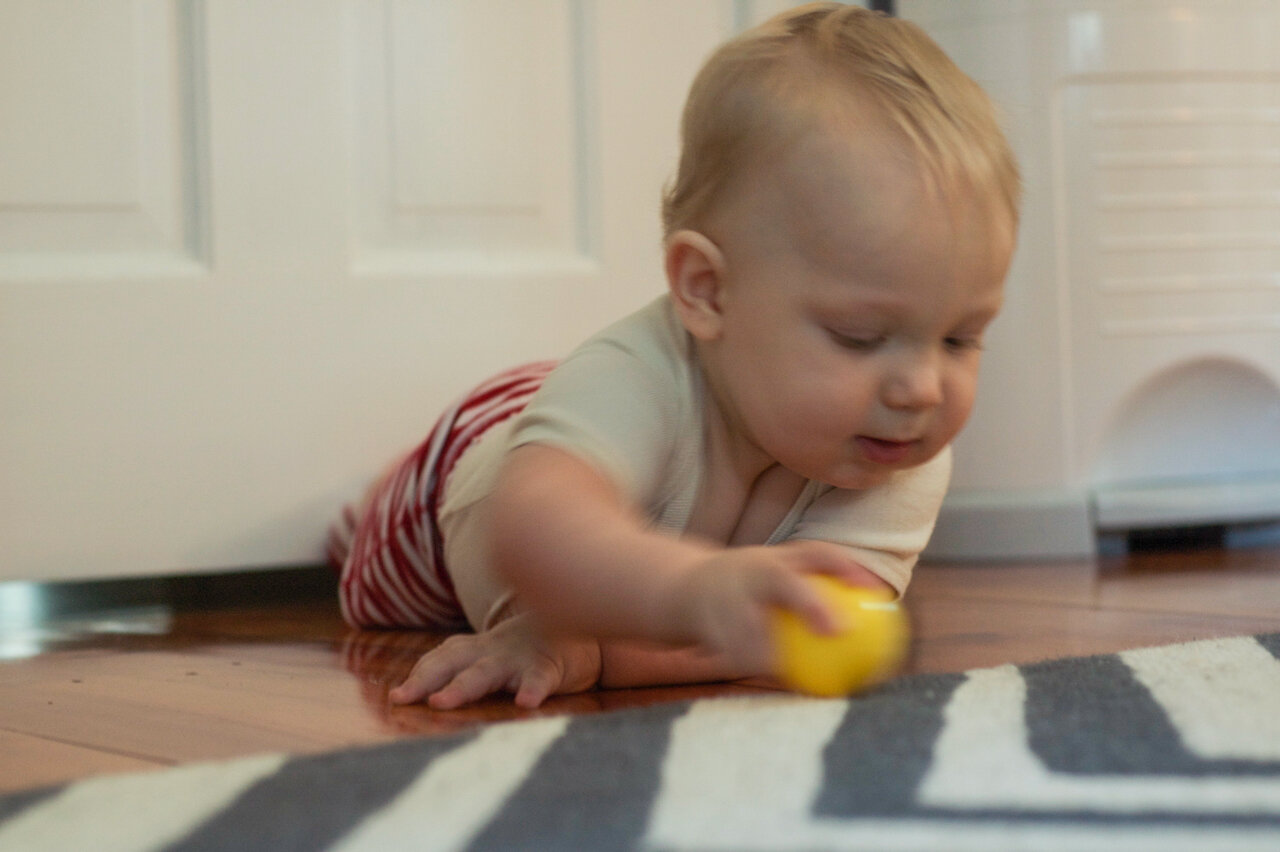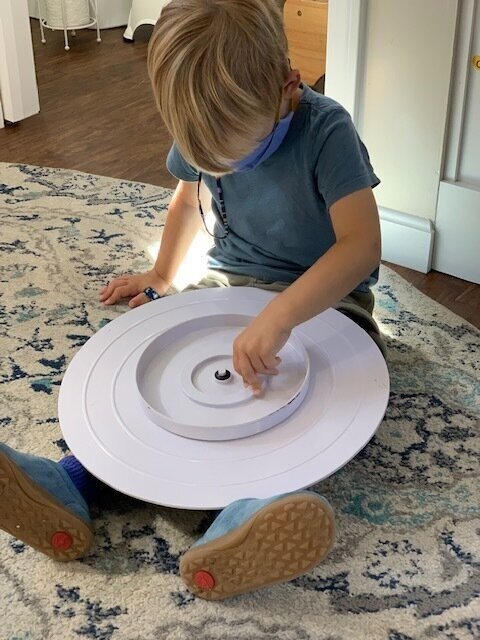Nurturing your child’s inner scientist
with QUIET OBSERVATION & SUBTLE ADJUSTMENT
Have you ever seen a baby approach a new toy for the first time? Let’s say it’s a ball. Baby reaches for the ball, grazing it accidentally, and the ball rolls away—so Baby scooches closer, and the same thing happens… Perhaps the third time, Baby is ready with a different approach—a different angle, or grasp, and this time, Baby is holding the ball. Bingo. The scientific method in action.
In a nutshell, the scientific method is question, research, hypothesis, experiment, analysis, and conclusion. In the earliest years, this process is naturally driven by wonder—a child secretly wonders a question, researches through play, inwardly hypothesizes outcomes, experiments new approaches to test them, internally analyzes what’s working/what’s not, makes adjustments, tests again, and draws an internal conclusion. All of this is happening right underneath the noses of early educators and parents around the world, every moment of every day. What we see is play, but what is really happening is the most basic form of inquiry and investigation—a child’s inborn scientist taking flight.
The Most Critical Early Childhood Skill
At Harmony, we are not only aware of the need to create space for this critical foundational skill—often overlooked in traditional early education settings that focus exclusively on early math, reading, and writing—we have structured our entire curriculum around our awareness that allowing children to first hone the innate scientific drive forms the strongest foundation for all future learning.
This is why Harmony’s foundational focus is carefully, thoughtfully setting the stage for play, and then stepping back to observe before intervening only as needed. In doing so, we are achieving multiple goals for children in one fell swoop: they are simultaneously cultivating their inner scientists, developing independence, discovering their inherent tools to learn about the world, and unwittingly laying the groundwork for their own intellectual skill-building. A child primed to tap into the scientific method is forming basic readiness to begin work on colors, numbers, reading, and writing. There is, of course, much more to it than that—which we will delve deeper into broader intellectual skill-building in a future post!
So how can you help a preschooler cultivate her inner scientist? Consider this classroom example…
Cultivating Scientific Discovery: Day One
One morning, a typically quiet and observant child seems to be in the mood to spin—gentle, subtle spins apparently satisfying some developmental need we cannot see.
The teacher recognizes the signs of the Rotation Play Schema in action—aka, the inquiry-based or science-driven urge to spin (as the wonderful Nature Play UK so succinctly explains here). Later that day, the teacher observes the child building with blocks—he stops abruptly when he realizes the large wooden bowl holding the blocks wobbles if he bumps it a certain way. He begins to spin the bowl repeatedly.
Observing this new round-and-round motion, the teacher silently digs out the classroom’s tabletop Lazy Susan and sets it on the shelves near the blocks. Soon, the young scientist discovers the tray and spends a long time spinning it at different speeds. Without a word, the watchful teacher soon places a small basket of colorful bottle caps nearby. He immediately arranges the caps on the Lazy Susan, spins, and watches the pieces slide off. Though he’s unaware his own scientific investigation, he’s been intently observing centrifugal force. He repeats this activity many times before he’s ready to leave the concept for the day.
Cultivating Scientific Discovery: Day Two
The next morning, his teacher leaves out the Lazy Susan and a small basket of glass gemstones. The child immediately goes to this new variation and conducts yesterday’s experiment with the gleaming treasures. Due to their weight, they rapidly slide and skid across the tabletop. Fascinated, he repeats this process again and again until he’s—apparently—satisfied with his “research” and ready to move on to something else. We’ll never know exactly what he absorbed today in his study of centrifugal force—and we don’t need to. What’s important is that he is the leader of his scientific discovery.
Cultivating Scientific Discovery: Day Three
Morning three, he returns to the Lazy Susan, and this time, flips it over… He considers its underside, and appears to contemplate what makes it work. For several minutes, he spins the bottom mechanism, observing its moving parts, before flipping it right-side-up, placing a bowl on its surface, and spin-spin-spinning it, carefully watching all the while.
With minimal adult intervention and no words exchanged, this child’s innate sense of wonder drove three mornings of highly productive exploratory play. So often, parents and teachers feel obliged to comment, encourage, urge, and instruct…yet when we temper that instinct, sit back, silently observe our children’s play and wordlessly present the tiniest supplementary element, we are almost always offering a much greater gift. When given the space to discover, contemplate, and explore, a child’s scientific process will naturally sprout from within. We are patient gardeners—when we subtly adjust the environment with the simplest elements while otherwise staying out of the way—play blossoms.
We encourage you to remember this the next time your child or student arrives at play materials you’ve set out. If the urge to open your mouth bubbles up, grab your coffee cup instead—silently sip, observe, and shift the environment in the slightest way possible, only as needed.
““Piaget believed that children learn only when their curiosity is not fully satisfied. He thought that children’s curiosity actually drives their learning. According to Piaget, the best strategy for preschool curriculum is to keep children curious, make them wonder, and offer them real problem-solving challenges, rather than giving them information. Many adults still hold the notion that a teacher is someone who shares information. Using Piaget’s theory about children’s learning requires changing the image of teacher into someone who nurtures inquiry and supports the child’s own search for answers.””
We’d love to see any Harmony-inspired moments you capture along your child’s early years journey. Tag us (@HarmonyNLC) on Facebook and Instagram, and use the hashtags #HarmonyNaturalLearningCenter #TheHarmonyApproach #HarmonyNLC
______________________________
Interested in introducing more of The Harmony Approach to your preschooler at home? Check out Harmony at Home today (FREE activities available).











